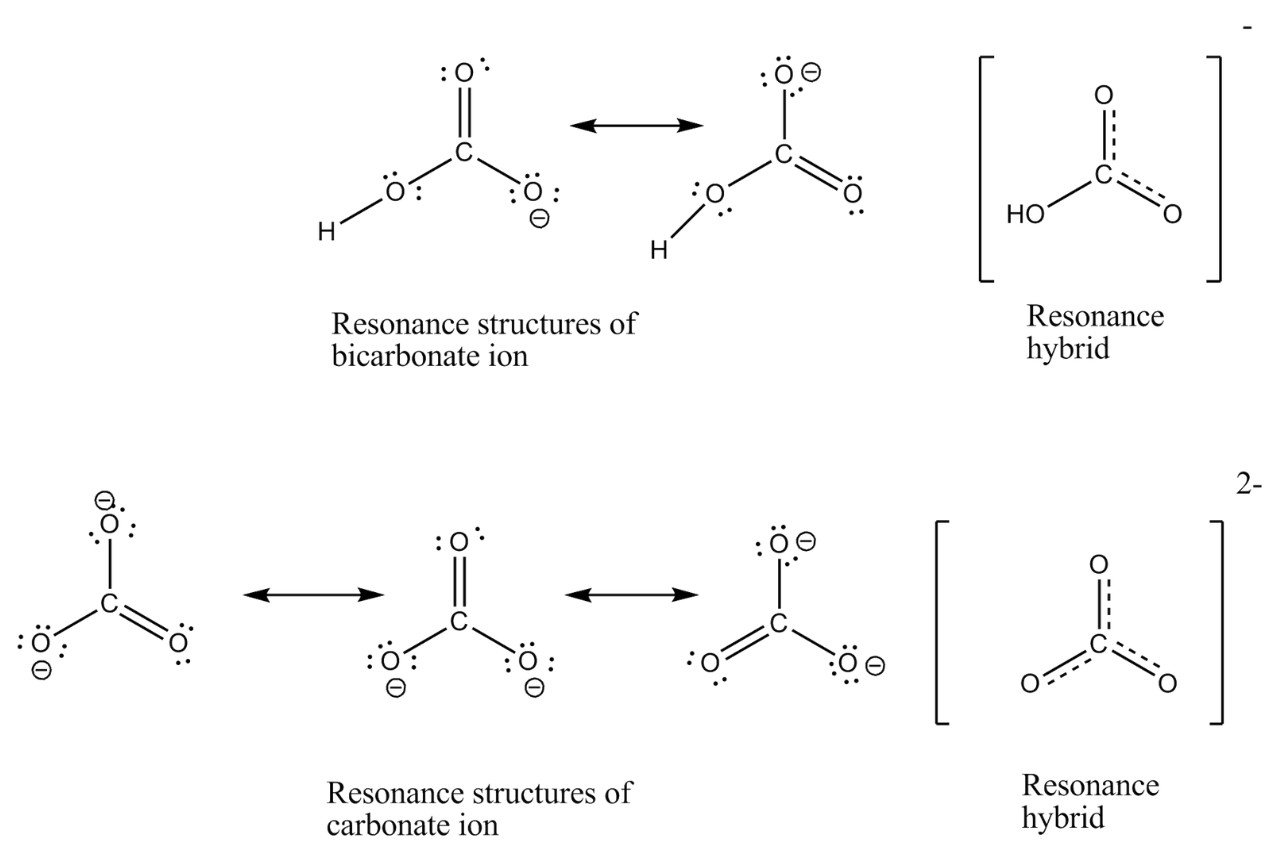
Resonance structure is a fascinating concept in chemistry that plays a crucial role in understanding molecular bonding and behavior. It refers to the alternate arrangements of electrons in a molecule or ion that exhibit distinct stability, giving rise to multiple resonance structures. This phenomenon occurs when a molecule can be represented by different Lewis structures, each differing in the placement of double bonds and lone pairs of electrons.
Resonance structures have a profound impact on the reactivity, stability, and electronic properties of molecules. They provide invaluable insights into the distribution of charge, delocalization of electrons, and overall molecular structure. Understanding resonance structures is vital for predicting reaction mechanisms, determining molecular geometry, and explaining phenomena such as aromaticity and the stability of certain compounds.
In this article, we will delve into 17 intriguing facts about resonance structure that demonstrate its significance in the world of chemistry and why it continues to captivate researchers and students alike.
Key Takeaways:
- Resonance structures in chemistry show how electrons move around in molecules, affecting their stability and reactivity. They’re like different dance moves for electrons, influencing how molecules behave and interact with others.
- Understanding resonance structures helps chemists predict how molecules will act in reactions, from making new compounds to explaining why some substances are super stable. It’s like knowing the secret patterns in a game that helps you win!
The Definition of Resonance Structure
Resonance structure is a concept in chemistry that describes the delocalization of electrons within a molecule. It occurs when a molecule or ion can be represented by multiple Lewis structures, known as resonance structures. These structures differ only in the arrangement of electrons, not in the connectivity of atoms. Resonance structures play a vital role in understanding the stability and reactivity of molecules.
Resonance Structures Are Not Isomers
Unlike isomers, resonance structures of a molecule have the same arrangement of atoms. The difference lies in the way electrons are distributed and delocalized within the molecule, resulting in different representations of electron density. This phenomenon contributes to the unique properties and behavior exhibited by molecules with resonance structures.
Resonance Structures Represent Electron Delocalization
In a resonance structure, electrons are not confined to a single bond or position but are spread over multiple atoms. This delocalization of electrons leads to enhanced stability and influences various chemical properties of the molecule, such as bond length, bond strength, and reactivity.
Resonance Structures Are Symbolized with Double Arrows
To denote resonance structures, chemists use double-headed arrows (↔) between the different representations. It signifies that the actual electron distribution in the molecule is an average of the resonance contributors.
Not All Molecules Have Resonance Structures
Resonance structures only exist in certain molecules or ions that possess delocalized electrons. Not every compound or ion can exhibit resonance, as it depends on the arrangement and interaction of electrons within the molecule.
Resonance Structures Contribute to Molecular Stability
The presence of resonance structures increases the stability of a molecule. This is due to the delocalization of electrons, which spreads the charge density across the molecule, reducing electron repulsion and promoting overall stability. Molecules with resonance structures are less likely to undergo drastic structural changes or react easily.
Resonance Structures Influence Molecular Shape
The arrangement of resonance structures affects the overall shape of a molecule. The distribution of electrons and the presence of double or triple bonds can create regions of electron density, leading to variations in the molecular geometry.
Resonance Structures Impact Chemical Reactivity
The presence of resonance structures affects the reactivity of a molecule. The delocalization of electrons can stabilize intermediate species during chemical reactions, making them more likely to form. Additionally, resonance structures can influence the selectivity of certain reactions, guiding the formation of specific products.
Resonance Structures Explain Aromaticity
Aromatic compounds, such as benzene, are characterized by their stability and unique chemical properties. Resonance structures play a significant role in explaining the stability and delocalization of electrons within aromatic rings, which contribute to their aromaticity.
Resonance Structures Can Display Electron Deficiency
In some cases, resonance structures can depict electron deficient regions in a molecule. This can arise when certain atoms have incomplete octets or involve the presence of positively charged species. Resonance stabilization helps alleviate this electron deficiency and adds stability to the molecule.
Resonance Structures Are Used in Organic Chemistry
Resonance structures are extensively used in organic chemistry to explain the behavior of organic molecules and reactions. They provide valuable insights into the stability, reactivity, and properties of various organic compounds.
The Importance of Resonance Structures in Molecular Orbital Theory
Resonance structures play a crucial role in molecular orbital theory, which describes the distribution of electrons in molecules and predicts their molecular properties. They help explain the formation of molecular orbitals and the energy levels of electrons within a molecule.
Resonance Structures Can Be Represented by Arrows
An alternative method to represent resonance structures is by using curved arrows to indicate the movement of electrons. These arrows show the flow of electrons from one resonance form to another and help visualize the electron delocalization within the molecule.
Resonance Structures Explain Bond Strength
The presence of resonance structures can influence the strength and stability of chemical bonds within a molecule. The delocalization of electrons can lead to bond strengthening or weakening, depending on the distribution of electrons and the resulting charge density.
Resonance Structures Are Not Limited to Organic Molecules
While resonance structures are commonly associated with organic chemistry, they can also be observed in inorganic compounds and polyatomic ions. The presence of resonance structures in these molecules contributes to their stability and unique properties.
Resonance Structures Help Explain Acid-Base Chemistry
Resonance structures play a vital role in understanding acid-base reactions. They help explain the stability of conjugate bases and the distribution of charge density within the molecule, which influences the acidity or basicity of a compound.
Resonance Structures Are Important in Polymer Chemistry
Resonance structures are significant in the study of polymer chemistry, where the structure and properties of polymers are analyzed. Understanding the resonance contributions in polymer chains helps predict their behavior, such as flexibility, stability, and reactivity.
Conclusion
In conclusion, understanding resonance structure is crucial for anyone studying chemistry. Resonance structure plays a fundamental role in explaining the stability and reactivity of molecules. By delocalizing electrons and distributing their charge over a larger area, resonance structures contribute to the overall stability of a molecule.Through resonance, molecules can exhibit multiple possible structures, with electrons shifting between different atoms and bonds. This phenomenon not only impacts the physical and chemical properties of molecules but also plays a significant role in reaction mechanisms.Furthermore, resonance structures are critical in drawing accurate Lewis dot structures and predicting molecular geometry. They provide a more realistic representation of molecules that cannot be accurately described by a single Lewis structure.Overall, the concept of resonance structure is intriguing and essential in understanding the behavior of organic and inorganic compounds. It opens up a realm of possibilities and adds complexity to the field of chemistry, making it an exciting area of study.
FAQs
Q: What is resonance structure?
A: Resonance structure refers to the representation of a molecule or ion using multiple Lewis structures that differ only in the placement of electrons. It indicates that a single Lewis structure cannot fully describe the bonding and electron distribution in a molecule.
Q: How do resonance structures impact molecule stability?
A: Resonance structures contribute to the stability of a molecule by delocalizing electrons and distributing their charge over a larger area. This distribution of charge stabilizes the molecule and reduces its reactivity.
Q: Can all molecules have resonance structures?
A: No, not all molecules can have resonance structures. Molecules require the presence of conjugated systems, such as alternating single and double bonds, or lone pairs of electrons to exhibit resonance.
Q: How do resonance structures impact molecular geometry?
A: Resonance structures provide a more accurate representation of the electron distribution in a molecule, allowing for a better understanding of its molecular geometry. They help determine the bond lengths and bond angles within a molecule.
Q: Can resonance structures exist in both organic and inorganic compounds?
A: Yes, resonance structures can exist in both organic and inorganic compounds. They are frequently observed in organic compounds, such as aromatic molecules or carboxylates, and inorganic compounds, such as nitrate or sulfate ions.
Resonance structures offer a captivating glimpse into the world of chemistry, revealing the intricate dance of electrons within molecules. Understanding their significance opens doors to deeper insights into molecular stability, reactivity, and shape. Beyond resonance structures, exploring the mysteries of Lewis dot structures and uncovering surprising facts about resonance structures themselves can further enrich your knowledge. Embark on a fascinating journey through the realm of chemical bonding, where seemingly simple concepts give rise to complex and beautiful molecular architectures. Discover the secrets that lie within these fundamental building blocks of chemistry, and let your curiosity guide you to new heights of understanding.
Was this page helpful?
Our commitment to delivering trustworthy and engaging content is at the heart of what we do. Each fact on our site is contributed by real users like you, bringing a wealth of diverse insights and information. To ensure the highest standards of accuracy and reliability, our dedicated editors meticulously review each submission. This process guarantees that the facts we share are not only fascinating but also credible. Trust in our commitment to quality and authenticity as you explore and learn with us.


